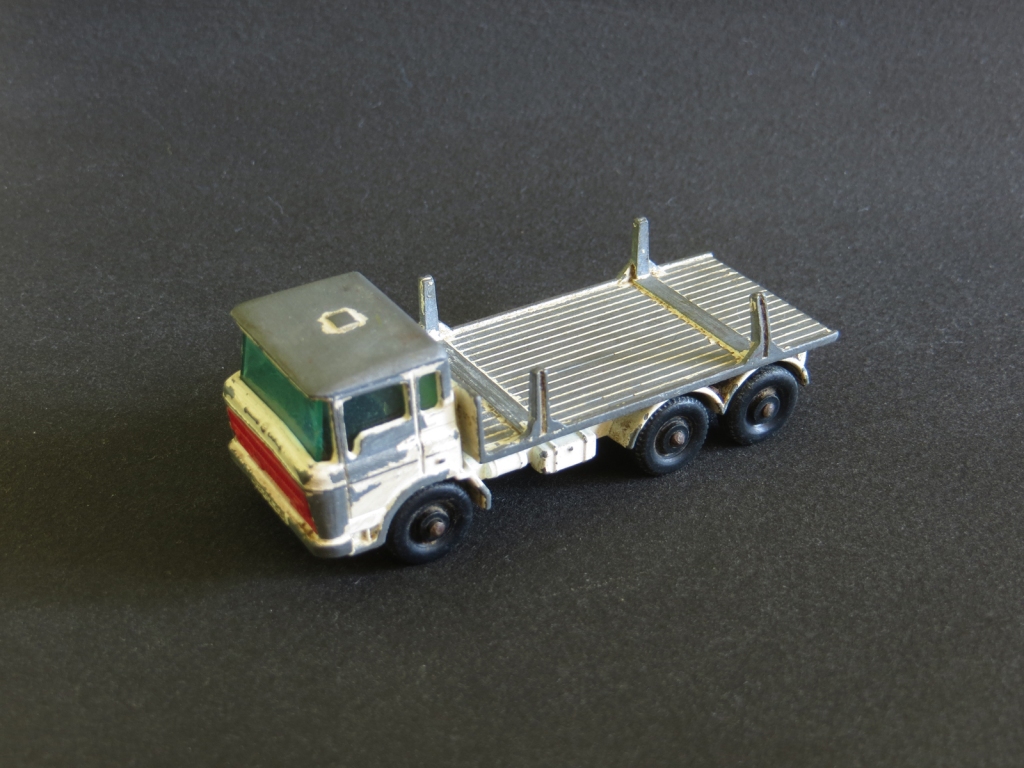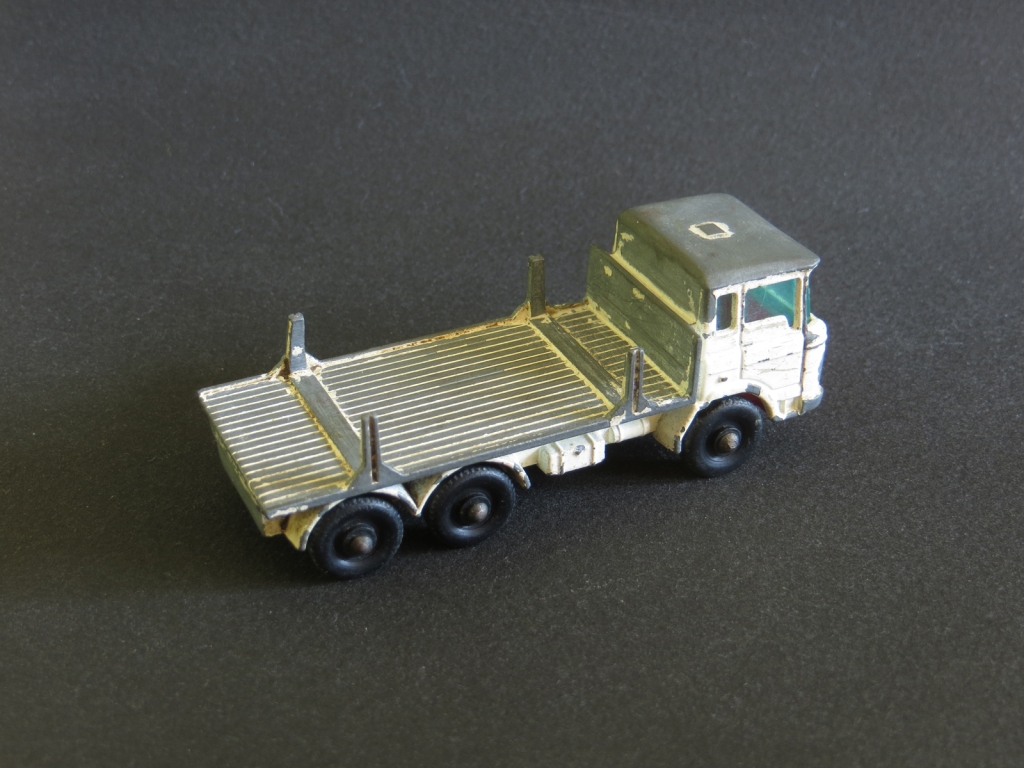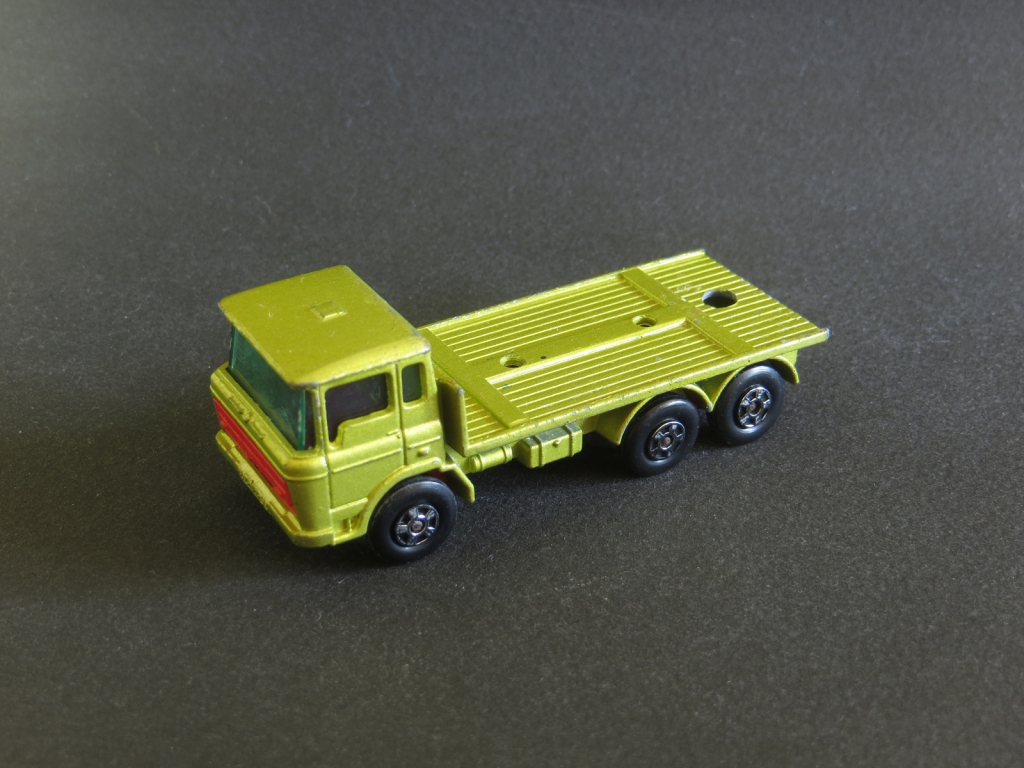The Dodge 500, later called the K Series, was a heavy-duty truck built in the UK by Dodge. It was introduced in 1964 and sold as a cab and chassis which could be fitted by the operator for a variety of purposes. Engine options included a V6 or V8 Cummins diesel or a 120hp Perkins diesel paired with a manual transmission. The 500 cab was styled by Ghia and was comfortable, roomy and had great visibility.
The Matchbox Dodge Crane Truck, based on the Dodge 500, was first released in 1968 and was produced in only three different variations. All three are yellow with green windows, but the regular wheels version could be found with a yellow or red plastic hook. This example – another of my finds from the Grandparent’s Estate Sale – is the Superfast version that was issued from 1970 to 1972. It has paint chips, aftermarket spatters, and is missing the yellow plastic hook.


The Matchbox Dodge Crane Truck features an arm that swivels, but unfortunately, does not raise up or down.

Matchbox | 1970-1972 | #63 | Dodge Crane Truck | yellow with green windows, missing yellow plastic hook, black plastic base | England | Superfast 4-spoke wheels




































